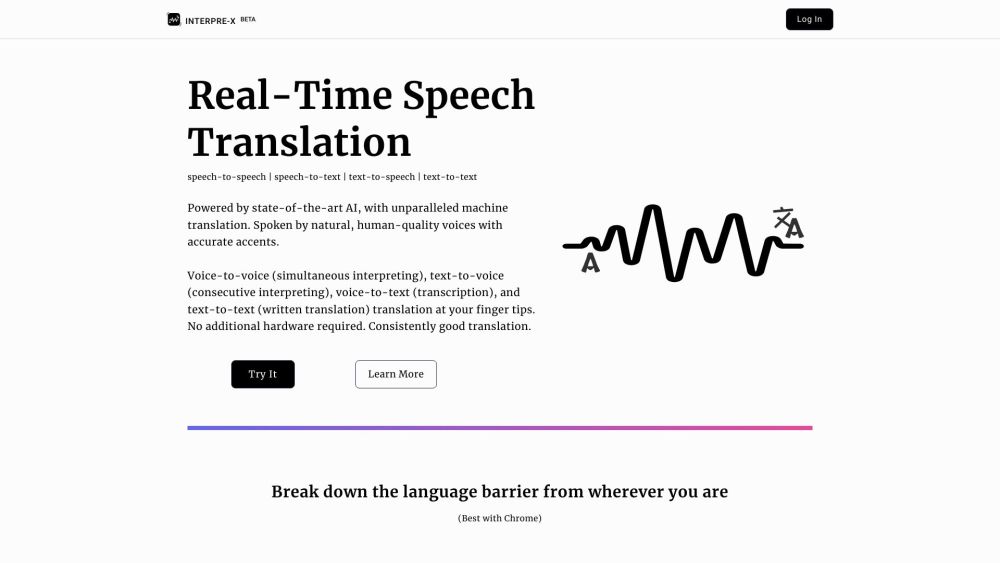FAQ from Interpre-X
What is Interpre-X?
Interpre-X is a groundbreaking web-based application that offers real-time speech translation in over 10 languages. Powered by state-of-the-art AI, Interpre-X breaks down language barriers by providing speech-to-speech, speech-to-text, text-to-speech, and text-to-text translations. Our advanced technology ensures natural, human-quality voices with accurate accents, delivering high-quality translations you can rely on.
How to use Interpre-X?
Using Interpre-X is as easy as accessing our website, preferably through Chrome, and selecting the desired translation mode based on your needs. Whether you're traveling, watching TV, learning a language, or conversing with someone who doesn't speak your language, Interpre-X helps you understand and communicate effectively. No additional hardware is needed, just a good internet connection.
What languages does Interpre-X support?
Interpre-X supports English (UK), English (US), Chinese (Mandarin), Japanese, French, German, Italian, Portuguese (Portugal), Portuguese (Brazil), Russian, and Spanish.
What is the accuracy of Interpre-X's speech recognition?
Interpre-X provides real-time speech recognition with an accuracy rate estimated to be over 80%.
What are the benefits of AI-powered interpretation / translation?
The benefits of AI-powered interpretation/translation include consistency, availability (24/7 service), accessibility (support for speech-to-speech, speech-to-text, text-to-speech, and text-to-text), cost-effectiveness, and reduced errors.
What is the difference between interpreting and translation?
Interpreting involves converting spoken content in real-time, while translation focuses on written content. Interpreting is best suited for conversations or group settings, while translation is used for written documents. Both require linguistic expertise and cultural understanding.
What is the difference between simultaneous and consecutive interpreting?
Simultaneous interpreting occurs in real-time while the speaker is still speaking, commonly used in formal or large group settings. Consecutive interpreting involves taking notes and relaying the message after the speaker has finished, suitable for small groups or one-on-one conversations.
